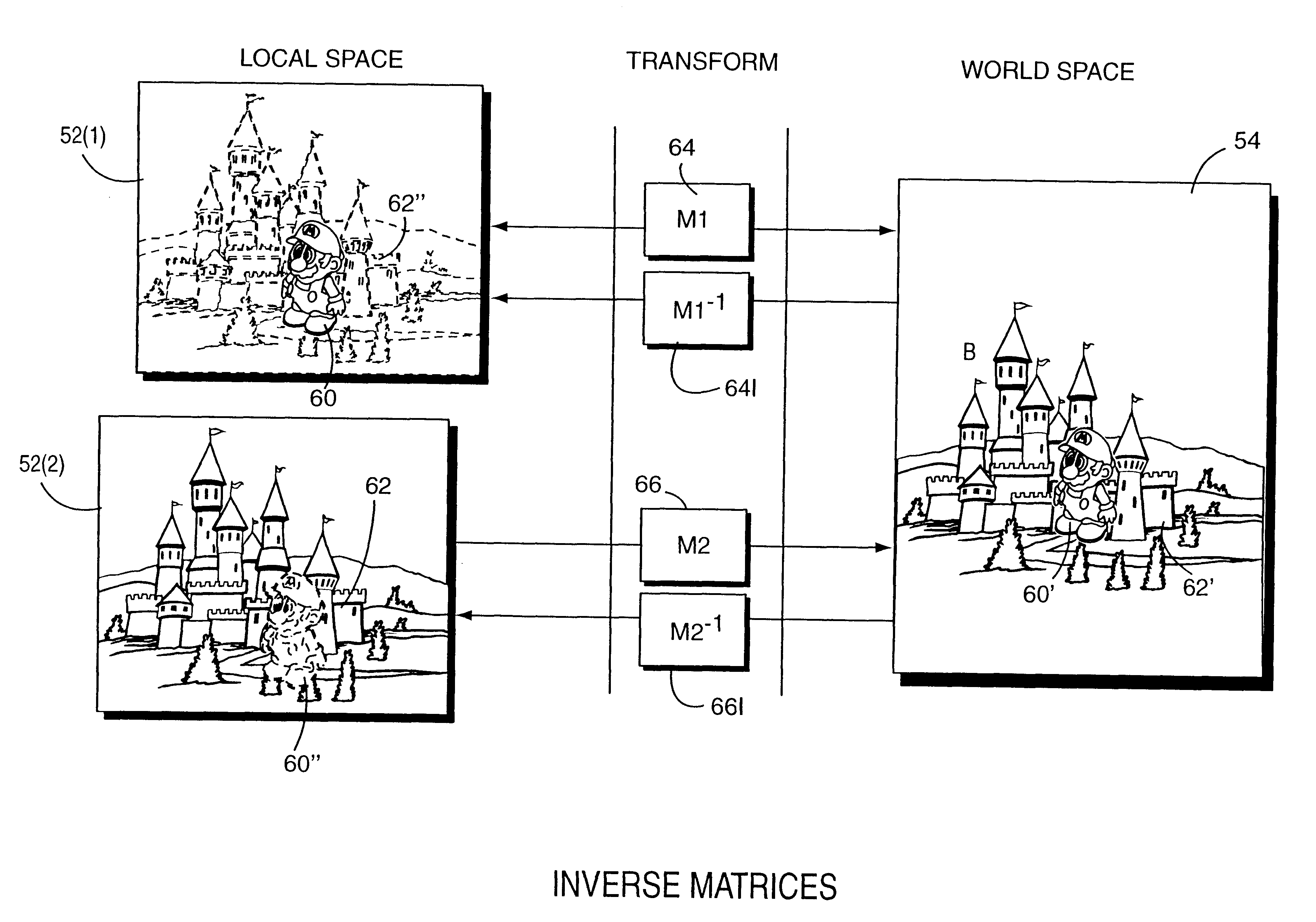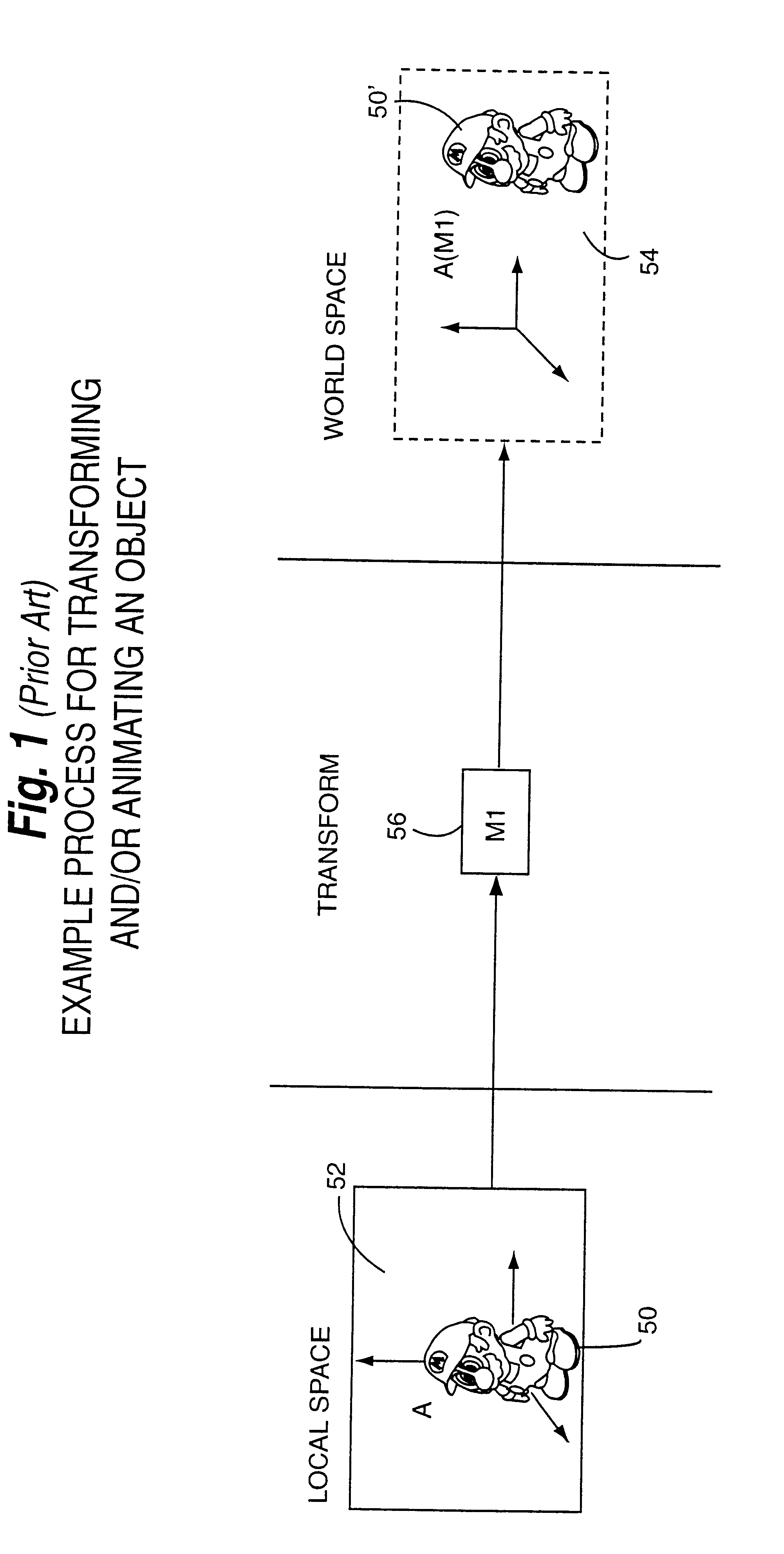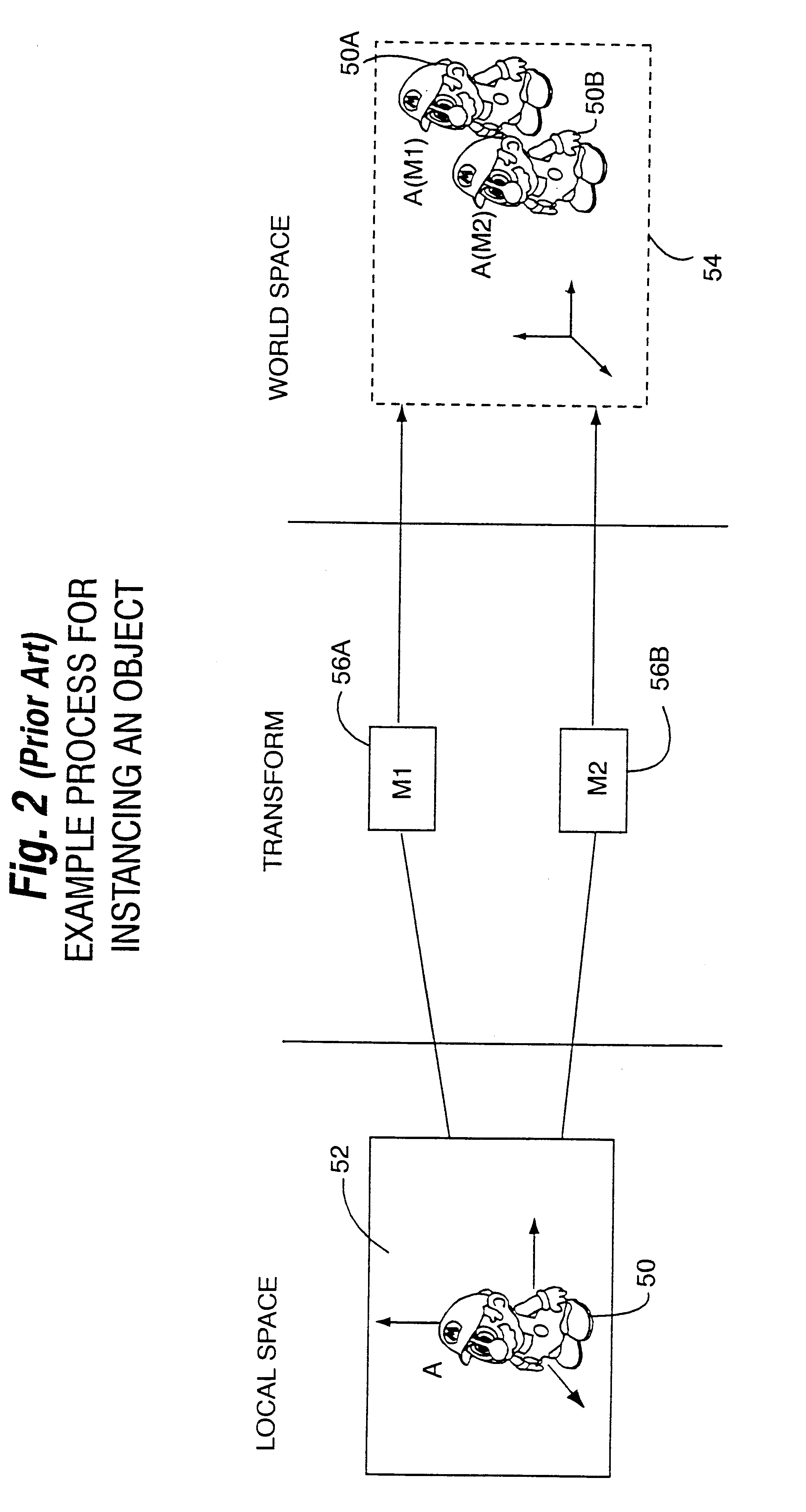Method and apparatus for efficient animation and collision detection using local coordinate systems
a collision detection and coordinate system technology, applied in the field of efficient collision detection and animation using local coordinate systems, can solve the problems of collision detection being a very processor-intensive operation, detecting collisions with large or irregular objects of arbitrary complexity, and crashing cars or other effects
- Summary
- Abstract
- Description
- Claims
- Application Information
AI Technical Summary
Problems solved by technology
Method used
Image
Examples
example more
Detailed Implementation
FIG. 8A shows an example hierarchical graphics database providing a hierarchical tree structure of coordinate systems CS. The FIG. 8A database may be stored or defined by information within the FIG. 6A game cartridge 210. The FIG. 8A hierarchical database can have any number of levels, each level having any number of coordinate systems. A root coordinate system CS OF ROOT may have any number of "child" coordinate systems CS(1) . . . CS(N) associated with it. Each "child" coordinate system CS(1) . . . CS(N) may, in turn, have any number of its own children coordinate systems (e.g., CS(1)(1), . . . CS(1)(J)).
FIG. 8B shows an example coordinate system data structure 300 that may exist at each "node" of the FIG. 8A hierarchical tree structure. In this example, each coordinate system data structure 300 may include the following elements:
a data management component 302;
a local coordinate system position component 304;
a local coordinate system orientation component 3...
PUM
 Login to View More
Login to View More Abstract
Description
Claims
Application Information
 Login to View More
Login to View More - R&D
- Intellectual Property
- Life Sciences
- Materials
- Tech Scout
- Unparalleled Data Quality
- Higher Quality Content
- 60% Fewer Hallucinations
Browse by: Latest US Patents, China's latest patents, Technical Efficacy Thesaurus, Application Domain, Technology Topic, Popular Technical Reports.
© 2025 PatSnap. All rights reserved.Legal|Privacy policy|Modern Slavery Act Transparency Statement|Sitemap|About US| Contact US: help@patsnap.com



